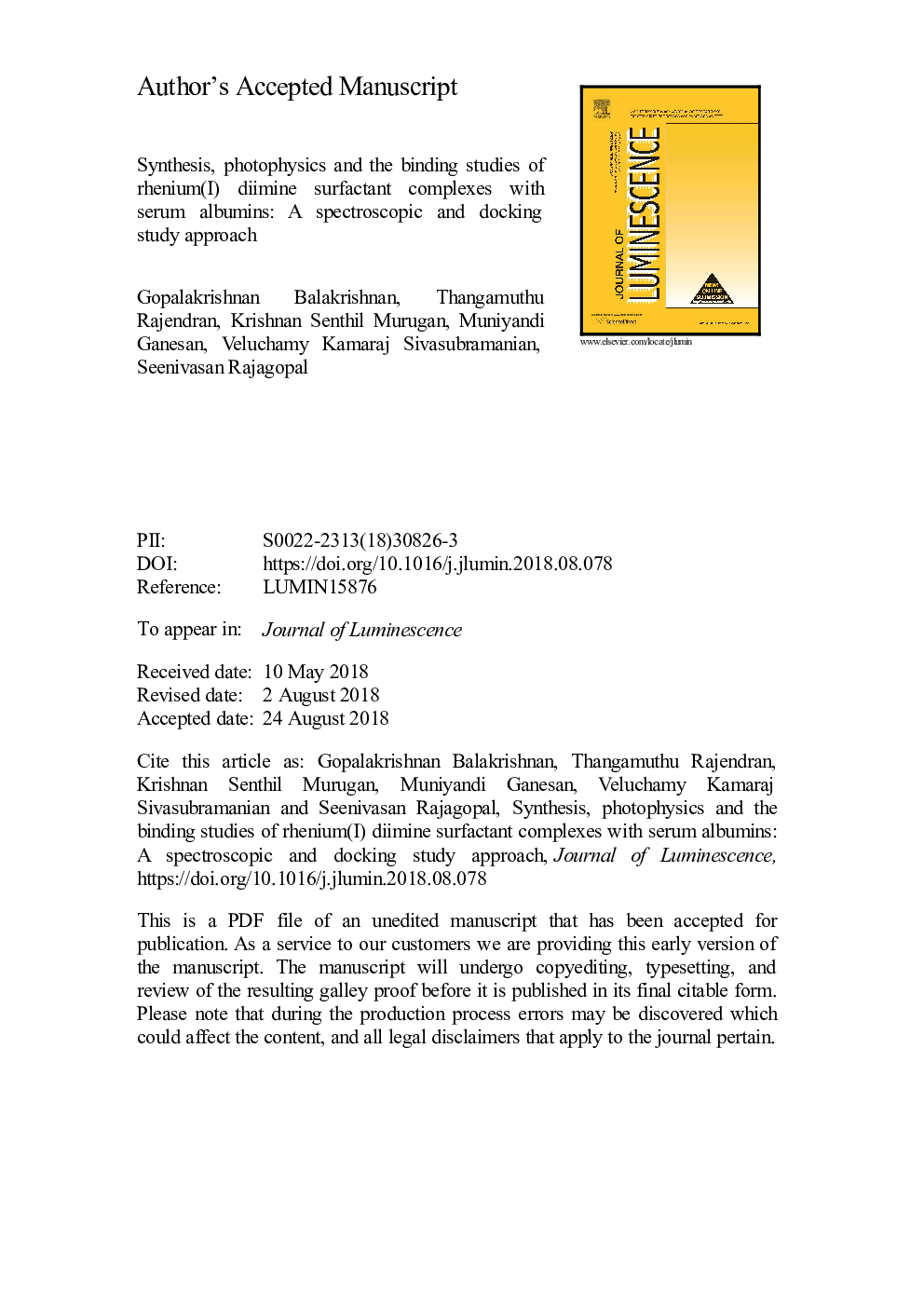| Article ID | Journal | Published Year | Pages | File Type |
|---|---|---|---|---|
| 8961405 | Journal of Luminescence | 2019 | 28 Pages |
Abstract
Synthesis of the four rhenium(I) diimine surfactant complexes of the type fac-[Re(CO)3 (α-diimine){4-C11py}] CF3SO31a-1d (α-diimine = 2,2â²-bipyridine (a), 4,4â²-di-methyl-2,2â²-bipyridine (b), 4,4â²-di-tert-butyl-2,2â²-bipyridine (c) 4,4â²-dinonyl-2,2â²-bipyridine (d) and 4-C11py =â¯(py-4-(CH2)10CH3) has been reported. In vitro protein (HSA and BSA) binding studies confirmed the binding affinity of the complexes toward the drug binding sites of subdomain IIA and IIIA, confirmed by spectral studies and molecular docking. The steady-state and time-resolved fluorescence spectra confirm that the static quenching, due to complex formation, is the dominant mechanism for fluorescence quenching. Molecular docking studies prove that hydrophobic interaction makes a predominant contribution even though hydrogen bonding does exist, and hence 1b, 1c and 1d exhibit stronger binding relative to 1a. The synchronous fluorescence and circular dichroism spectral studies show that these Re(I) complexes can induce conformational changes in the proteins. Finally, the distance, r, between donor (proteins) and acceptor (Re (I) complexes) obtained through FRET study is in the range 4.5-5.2â¯nm.
Related Topics
Physical Sciences and Engineering
Chemistry
Physical and Theoretical Chemistry
Authors
Gopalakrishnan Balakrishnan, Thangamuthu Rajendran, Krishnan Senthil Murugan, Muniyandi Ganesan, Veluchamy Kamaraj Sivasubramanian, Seenivasan Rajagopal,
